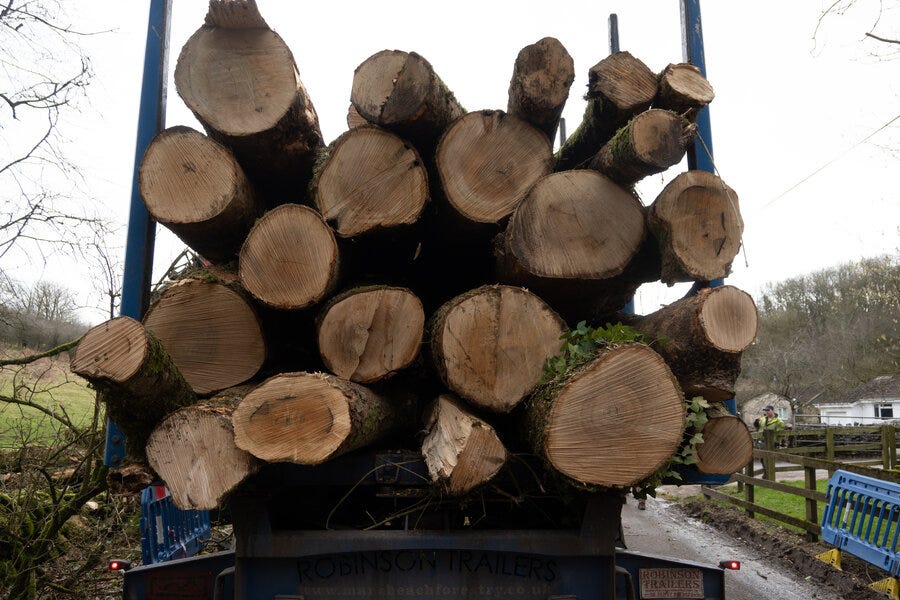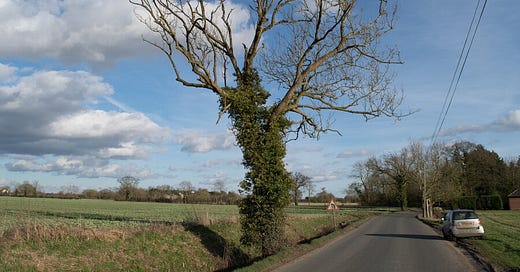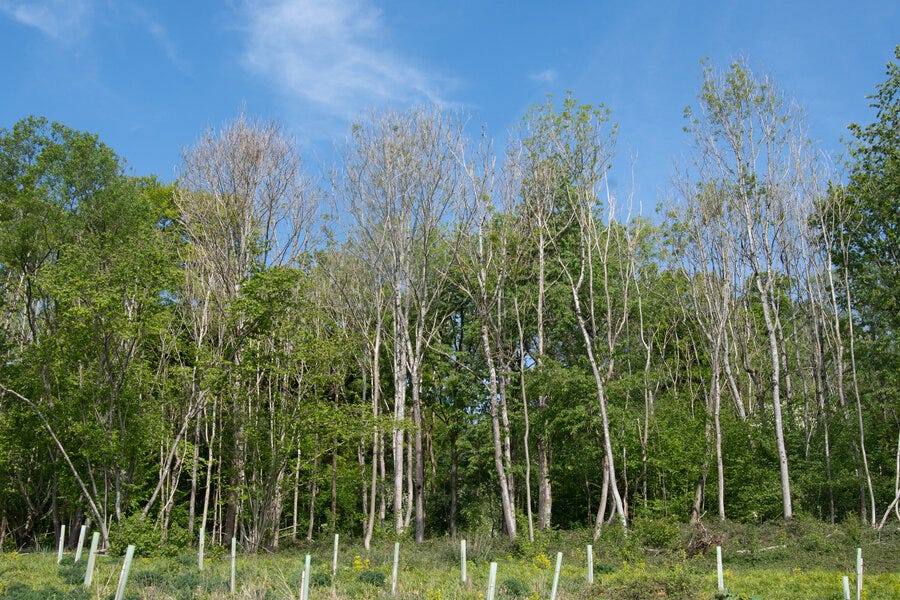Since it was first recognised in England in 2012, ash dieback disease has been one of the most significant tree health issues affecting the UK’s treescapes. By causing the decline and death of large numbers of our ash trees, the fungal pathogen has had widespread impacts. These range from the loss of habitat for our native biodiversity, to the safety risks posed to the public and tree workers.
Recognising the threat that ash dieback presented, and the need from local authorities and other land managers to receive useful information and clear guidance, The Tree Council worked with Fera Science, with funding from Defra, to produce the first edition of the Ash dieback toolkit in 2019. This document focused on the early tasks that a local authority would need to carry out to produce a well-considered and effective Ash Dieback Action Plan. The toolkit flagged some key actions, such as raising awareness of the disease, assessing the scale of the problem, and engaging the key departments and individuals within a council. Many organisations have since used the toolkit as the go-to guide to prepare their plans, and help secure the budgets needed to implement them. A full list of existing action plans is available on The Tree Council website.
In the 5 years since the original toolkit was published, the situation with ash dieback in the UK has progressed. The scale of the challenge faced by those managing ash trees has become more evident, and the actions required have become increasingly complex. As such, the nature of the guidance that is required has also changed. In tandem, the evidence and science behind the disease, its progression and how to manage infected trees has evolved. Given these circumstances, we felt it was necessary to review the toolkit and create a second edition which reflected the state of play, five years on.
As with most of our Tree Council projects, producing the toolkit was a collaborative effort, and was only achievable through generous contributions of time and knowledge. We are particularly grateful to the local authorities who talked us through their approaches, discussed their successes and challenges, and shared resources they had produced. These first-hand experiences informed the eleven case studies which are invaluable additions. As well as delving into the practicalities of dealing with ash dieback, we also reviewed the scientific literature, to ensure that we were presenting the most up-to-date information. We hope that by combining these different sources, the toolkit can act as a one-stop shop for any information that local authorities, or others, might need about ash dieback and how to deal with it.

During our review, we found that the local authorities we spoke to had mostly moved past the ‘planning’ stage and were now ‘taking action’. We wanted the updated toolkit to reflect this shift in focus, and so part of the new content is structured around six practical actions that treescape managers may be dealing with:
Action 1 – Creating a communication strategy
Action 2 – Ongoing monitoring of ash
Action 3 – Planning and carrying out major tree works and large projects
Action 4 – Trees and the highway
Action 5 – Preparing and delivering a tree strategy
Action 6 – Dealing with waste timber
Action 7 – Ash dieback and worker safety
Action 7 highlights work undertaken by The Tree Council to produce a Supplementary Guidance Note on Ash Works on behalf of the Ash Dieback Risk Group (Scotland) with the support of Scottish Forestry. This provides a technical look at the risks associated with working on diseased ash trees. It draws upon experience from professional arborists already working on these trees and outlines how some tree work methods have been adapted to reduce risk to the people working on them.
In addition, we wanted to make sure that the implications of removing ash were carefully considered, and so we included a section in the toolkit focusing on the importance of planning for recovery after ash tree removal. This covers the impacts on biodiversity and the importance of retaining live and dead ash where possible, as well as some guidance around replanting and creating resilient future treescapes.
Ash dieback presents a huge challenge for many individuals and organisations who care for trees, but working together and sharing knowledge supports everyone in this journey. We hope these resources will be useful additions to the existing guidance around ash dieback. While some of the information from the first edition has been pulled across into the most recent update, it is intended as a stand-alone document. Therefore, we would recommend that any local authorities in the early stages of their ash dieback response refer first to the first edition, while those who are now progressing with their activities and considering recovery strategies make use of the second edition.
Both editions of the toolkit are available on The Tree Council ash dieback webpage. For those who are more directly involved in carrying out tree works on potentially diseased ash, we would recommend the Supplementary Guidance Note for Ash Works in Scotland.
The Tree Council is hosting a free, online talk on The Future of Hedgerow Trees: living with ash dieback, as part of National Hedgerow Week. It takes place from 1 - 2pm on Thursday May 8. To book your free spot, please visit www.tickettailor.com/events/thetreecouncil
Charlotte Benham is The Tree Council’s Science & Research Projects Officer
Find out more about The Tree Council at treecouncil.org.uk. Sign up to our monthly newsletter The Leaflet, and follow our social accounts: Instagram, TikTok, Facebook, LinkedIN, X/Twitter, YouTube.









As a layman a short brief introduction at the start of this article is required:Ash trees are dying, it effects????age of trees? We have to cut some? All? Of them down, we've a problem getting rid of the wood, WE ARE REPLANTING xxx trees to balance the losses???To much waffle,reference to toolkits in the headline article, read for 5 minutes and was really no wiser...
If contractors are taking the trees as part of their payment, it can be open to abuse by local authority employees, as more trees are felled to a stump than need be.